Hi, my name is Brendan Hellweg and I am a student at Williston. I also am a writer and editor for The Willistonian, a theater techie, and, as of now, the writer of a student blog. I plan to talk about academics, student life, and general Williston-related news.
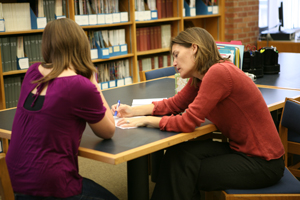 |
| Sarah Sawyer helps a student |
I figure a good way to start off this blog would be a little bit about one of my favorite parts of Williston: the Writing Center. I’ve always enjoyed writing and the written word. Since an early age, reading was my go-to source of entertainment (at least until the computer cried its illustrious siren song…) and the idea of inventing whole new worlds of my own thrilled my young self.
The Writing Center is located just above the library. About fifteen inspirational quotes from famous authors hang from the ceiling. Inside the bright little room is usually a writing center aide who reviews and helps edit student work. Although mostly it is meant to be school work, from my understanding the writing center also welcomes extracurricular writing projects and is glad to give advice and helpful hints on basically anything you can type. The Writing Center is especially useful to my English class because the director of the writing center, Ms. Sawyer, is also my English teacher, and having an extra chance for your teacher to point out the same errors that normally you would be losing points for is very helpful.
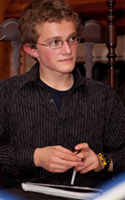 |
| Brendan Hellweg |
So far I have used the center for a three-page essay on the British sci-fi show Doctor Who, a 16-page compilation of short pieces on Shakespeare’s Romeo and Juliet, and a dystopian short story about the limits of control on the human mind. Every time I walk out I feel like I have just improved my piece tenfold and learned something new about how I can create a story cleanly and articulately. The Writing Center is like a strainer through which I can put a hastily written essay about everything and nothing, and the result is something worth being proud of. I can see myself going there a lot in the future.


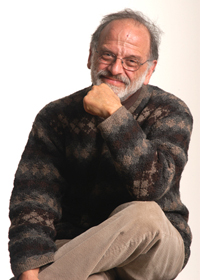 The book’s inception goes back to Williston’s Intersession program in the 1980s. One of the courses Mr. Lipp offered was a course in math games. He invented several of the games, but many of them are well-known, including Tic-Tac-Toe and Connect-the-Dots. All of the games have an underlying math theme, even if it is not apparent at first. His previous two books, published in 2000 and 2001, were supplements to textbooks for AP calculus. The Play’s the Thing is more general and intended for classroom use in grades 8-12.
The book’s inception goes back to Williston’s Intersession program in the 1980s. One of the courses Mr. Lipp offered was a course in math games. He invented several of the games, but many of them are well-known, including Tic-Tac-Toe and Connect-the-Dots. All of the games have an underlying math theme, even if it is not apparent at first. His previous two books, published in 2000 and 2001, were supplements to textbooks for AP calculus. The Play’s the Thing is more general and intended for classroom use in grades 8-12.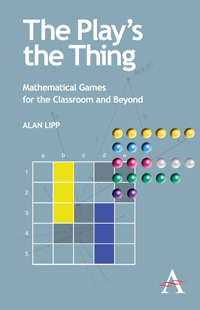 Though the games in The Play’s the Thing can be played by students at all levels, the book challenges students to develop a winning strategy: an effective way to win every time. With some of the games, known solutions exist, but with others, none have yet been found. In the Introduction, Mr. Lipp writes, “In some cases the answers are not known, but the question is presented in the belief that the search for an answer is worthwhile.”
Though the games in The Play’s the Thing can be played by students at all levels, the book challenges students to develop a winning strategy: an effective way to win every time. With some of the games, known solutions exist, but with others, none have yet been found. In the Introduction, Mr. Lipp writes, “In some cases the answers are not known, but the question is presented in the belief that the search for an answer is worthwhile.”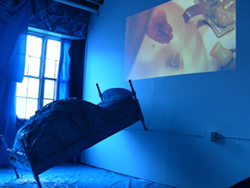
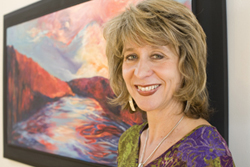
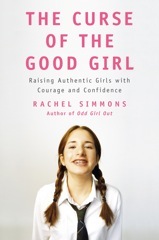 At Williston, education doesn’t end with the conclusion of the class day. Amanda Rappold, physics teacher and dorm head of French House, has initiated a study group to help better prepare the girls in her dorm for life after Williston. They are reading The Curse of the Good Girl by Rachel Simmons, which addresses the challenge of being both successful and genuine, or, how to be a “real” girl and not just a “good” girl.
At Williston, education doesn’t end with the conclusion of the class day. Amanda Rappold, physics teacher and dorm head of French House, has initiated a study group to help better prepare the girls in her dorm for life after Williston. They are reading The Curse of the Good Girl by Rachel Simmons, which addresses the challenge of being both successful and genuine, or, how to be a “real” girl and not just a “good” girl.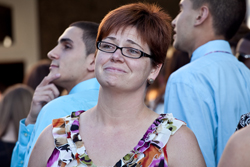
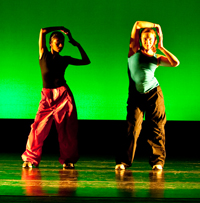 A show of original choreography will grace the stage of the
A show of original choreography will grace the stage of the 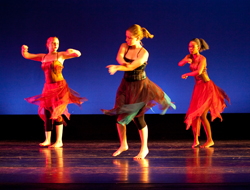 Student choreographers Mika Chmielewski, Brittany Collins, Pankti Dalal, Victoria Durocher, Dale McGraw, Anuska Sarkar, Bruna Tarraf, Madeline Wise, and Annie Zheng will present pieces set to musical choices ranging from Marilyn Manson to Justin Bieber to G.F. Handel. The show will also feature a special solo presentation by ninth grader Tory Kolbjornsen.
Student choreographers Mika Chmielewski, Brittany Collins, Pankti Dalal, Victoria Durocher, Dale McGraw, Anuska Sarkar, Bruna Tarraf, Madeline Wise, and Annie Zheng will present pieces set to musical choices ranging from Marilyn Manson to Justin Bieber to G.F. Handel. The show will also feature a special solo presentation by ninth grader Tory Kolbjornsen.